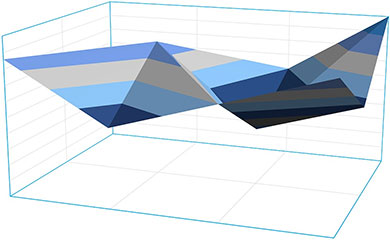Anyone who has ever experienced the despair of a failed product test result, also knows the hope of passing a product specification re-test.
 The hope that lab variability, sample variability, or even luck may change the test results should never be the basis of product quality, yet the phrase “Quality by Testing” did not arise from baseless imagination. Over the years, the U.S. Food and Drug Administration (FDA) sponsored meetings, forums, and sessions that ultimately culminated in guidelines now commonly referred to as "Quality by Design."
The hope that lab variability, sample variability, or even luck may change the test results should never be the basis of product quality, yet the phrase “Quality by Testing” did not arise from baseless imagination. Over the years, the U.S. Food and Drug Administration (FDA) sponsored meetings, forums, and sessions that ultimately culminated in guidelines now commonly referred to as "Quality by Design."
Quality by Design: A Brief History
In 2004, the FDA's Center for Drug Evaluation and Research (CDER) published a report on pharmaceutical quality for the 21st century, which spelled out a vision to modernize the regulation of pharmaceutical manufacturing and enhance product quality. In, 2015, CDER launched the Office of Pharmaceutical Quality (OPQ), whose mission is to address gaps in drug quality and ensure that quality medicines are available for the American public, with a vision of being a global benchmark for the regulation of pharmaceutical quality. "One Quality Voice" is the motto of OPQ, which is a super-office with numerous sub-offices for regulatory programs, policies, and products.
 Helping Clients Meet Regulatory Standards
Helping Clients Meet Regulatory Standards
Navigating through extensive FDA guidances and related documents can be as overwhelming as developing the drug itself.
At the University of Maryland School of Pharmacy's Applied Pharmaceutics Lab (APhL), we have experience at the working level of Quality by Design. We have experience creating quality target product profile (QTPP), as well as linking critical material attributes (CMA) and critical process parameters (CPP) to critical quality attributes (CQA).
Additionally, we can assist with the development of risk assessment reports utilizing FDA Q9 Quality Risk Management guidelines to determine key critical attribute levels. Finally, we can carry out the actual design of experiments (DOE) per ICH Q8, Q9, and Q10 guidelines, including data summary and statistical analysis.
Related APhL Quality by Design Studies
- Understanding Pharmaceutical Quality by Design
- Quality by Design I: Application of Failure Mode Effect Analysis (FMEA) and Plackett–Burman Design of Experiments in the Identification of “MainFactors” in the Formulation and Process Design Space for Roller-Compacted Ciprofloxacin Hydrochloride Immediate-Release Tablets
- Quality-by-Design III: Application of Near-Infrared Spectroscopy to MonitorRoller Compaction In-process and Product Quality Attributes of ImmediateRelease Tablets
